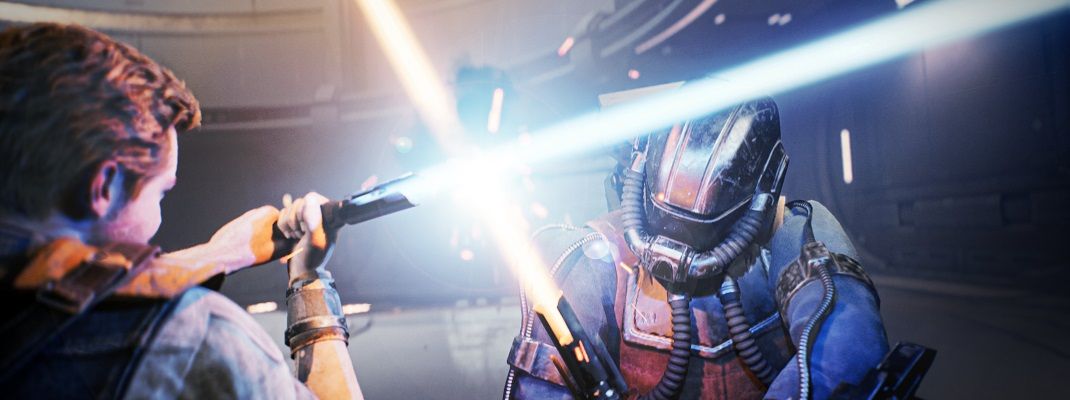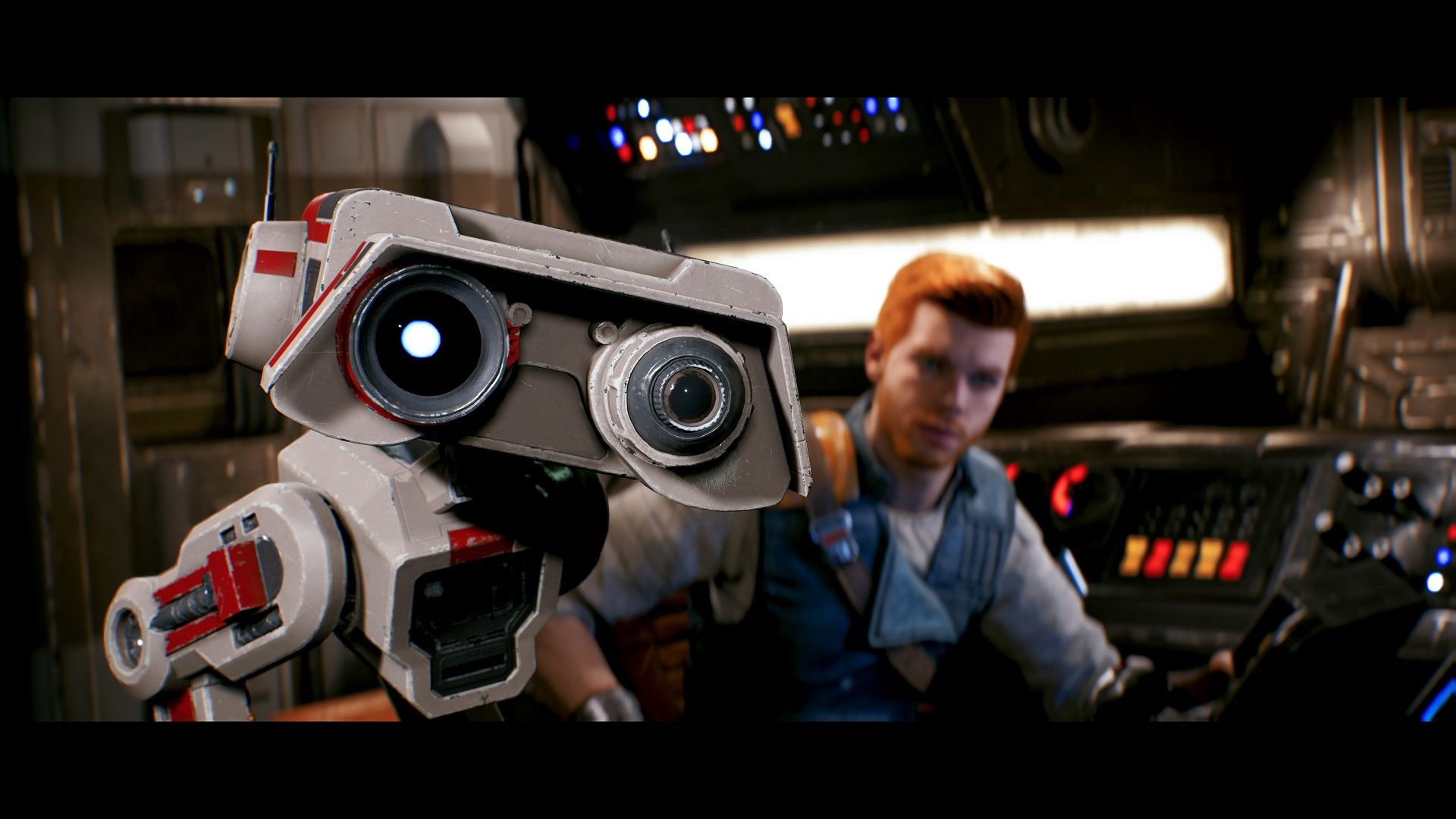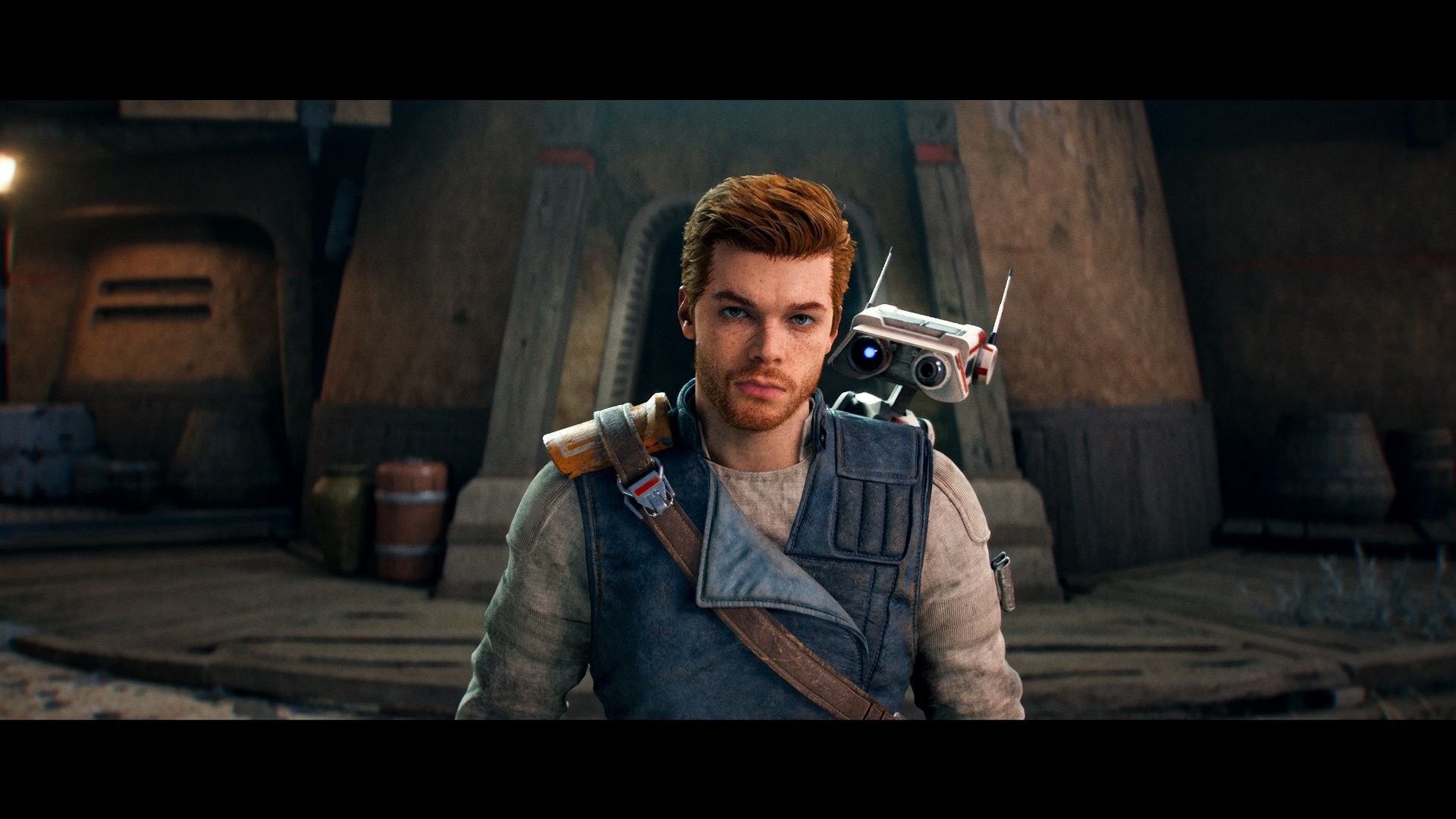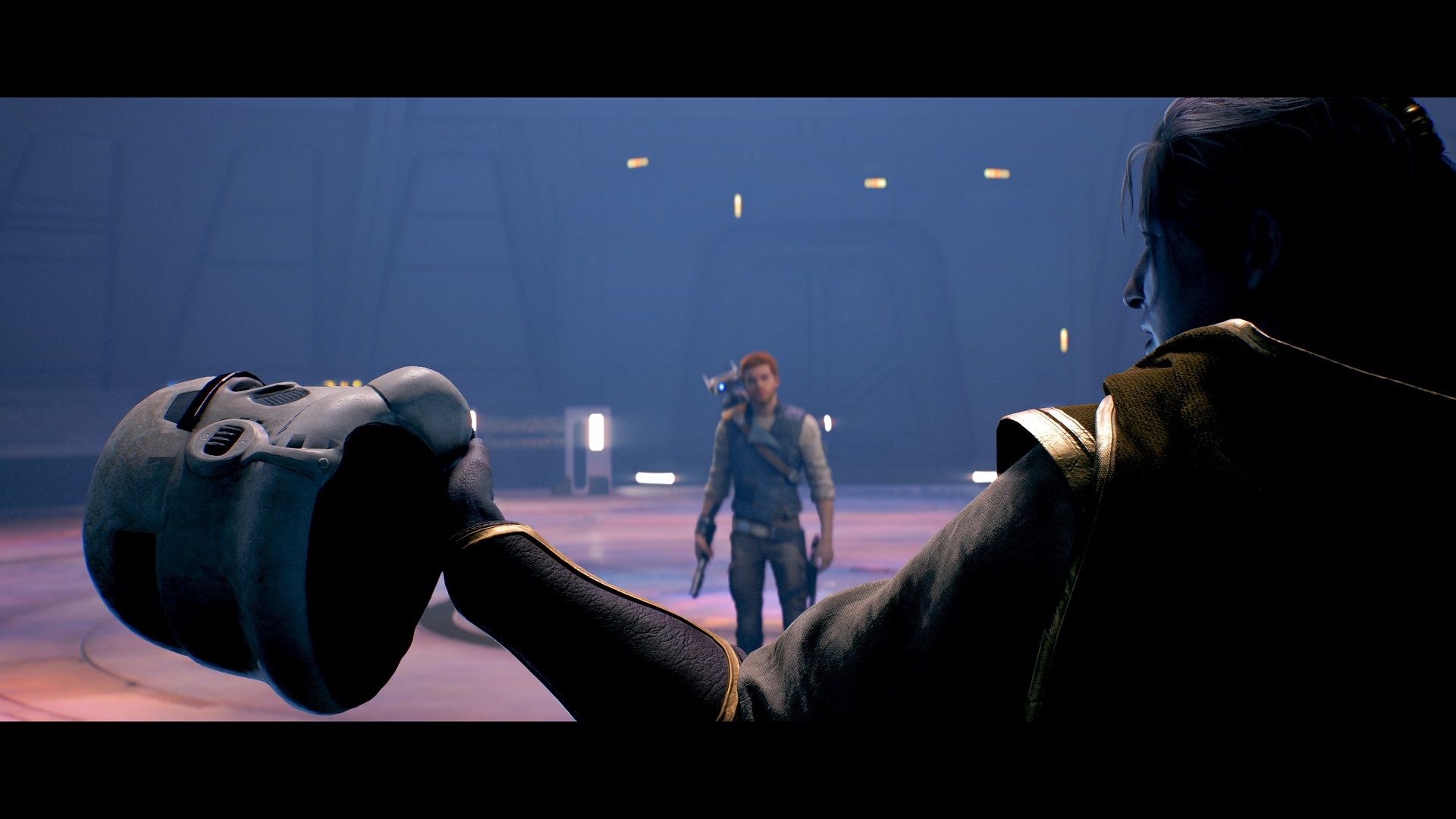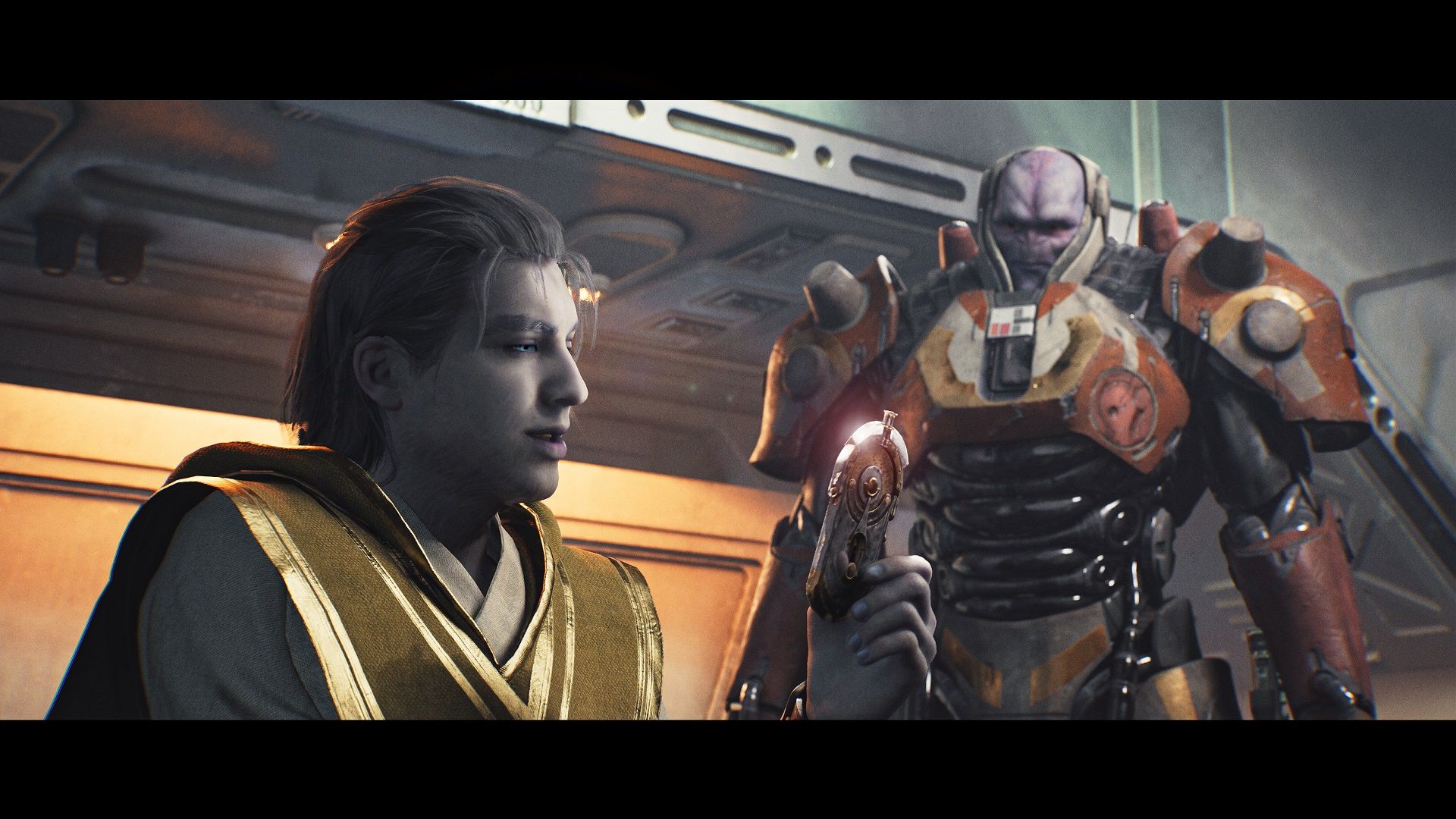Grab your lightsaber, pack up your blaster and grab your droid because Star Wars Jedi: Survivor is nearly here. The sequel to the breakout hit, Star Wars Jedi: Fallen Order, Survivor aims to build upon the foundation of its predecessor and deliver a vastly-improved sequel. After playing three hours of the game, we had the chance to sit down with Design Director Jeff Majors and Senior Producer Blair Brown to figure out how Respawn Entertainment is approaching the sequel, how their relationship with Lucasfilm has evolved and how players can customize BD-1.
[Hardcore Gamer]: Star Wars Jedi: Survivor takes place ten years after Revenge of the Sith and five years after Star Wars Jedi: Fallen Order. Where’s Cal now? What’s happened to him in that five years?
[Jeff Majors]: Well, it’s been five years, like you said, since the events of Fallen Order. Cal is a more mature Jedi. We’re not going too much into what explicitly has happened in those five years as we want players to find that out while playing the story. But as far as where Cal is as a Jedi, he’s more mature and we’ve taken a look at his controls and his combat and all of his moves and tried to refine and make all of those things more responsive. So, when you pick up the controller, Cal feels more mature, more connected to the world.
[Blair Brown]: Also, the band broke up and you have to find out what’s going on with them. So yeah, as you play through Jedi: Survivor, you will uncover what exactly happened during those five years. But as you play through the slice of the game playing now, you’ll see that he’s a little more mature, as Jeff said, but also a little more questioning, "What am I doing? What am I making a difference against the empire?" Because it is the dark times. It is the worst time to be a Jedi victorious is chasing them. And he’s like kind of at least what you’re you’re seeing in the slice of the demo is just, why am I doing this? Does it matter?
Looking back on Fallen Order, it kind of came as a surprise. It was a dark time for Star Wars fans when it came to gaming. Then Fallen Order launched and really changed everything. Looking back at launch, how did it feel getting that positive fan reception? What did you take from that both positive and negative to develop the sequel?
[Majors]: We were really proud of the game we put out and we were thrilled and over the Moon with the fan reception. Like, we couldn’t imagine like better reception for our first entry there. So what we got to do with this game was make a true sequel. We got to take that foundation and dissect all of it to look at every piece and refine it. We wanted to make what worked even better and push this Cal 2.0 idea where traversal is more refined, and combat is more mature. For example, Cal has these five stances that he can switch between to tackle different enemy encounters. As far as the game structure is concerned, we greatly expanded the exploration. There’s a lot more optional content for the player to discover around every corner.
[Brown]: Yeah, getting that feedback and reaction was as a developer, as somebody who loved Star Wars growing up, it was like, oh, this is awesome. The Mandalorian was coming out right at the same time. I was like, oh, it’s a great time to be a Star Wars fan. For us, looking back now, especially when we started the second game was knowing what people really liked. Let’s just make it better for the next one.
One of the sticking points for players was the Dark Souls formula and the idea that it doesn’t really fit within the established Star Wars universe. How have you further adapted it for Survivor so that it feels like a better fit?
[Brown]: The fundamental gameplay hasn’t changed. That some loop of difficult combat encounters, resting at Meditations Points, and choosing your loadout are all there. We did hear a lot of feedback, and we also saw it. We played through our game after launch and we understood. So we focused on adding more quality-of-life improvements. Things like making the map more readable, adding fast travel so that the Metroidvania experience is smoother for players, making it easier to stick with the story. We think that these improvements help make the game feel better. The world is bigger, there’s tons more to do. The story’s longer. So I think we’ve landed in more of a sweet spot that should be more accessible and fun for all types of gamers. For the hardcore that want to play on Grand Master and have the hardest boss fight ever, and the people who are just here for a Star Wars story.
[Majors] Yeah, I’d say we’ve made that part harder. If you if you want to play on Grand Master, we’ve really looked at that experience and there’s some extra tricks up our sleeve for that mode. Also, in the previous entry we had four difficulty modes: Story Mode, Jedi Knight, Jedi Master and Jedi Grand Master. One thing we felt was there was a bit of a big gulf between story mode and Jedi Knight. So we’ve added Jedi Padawan in between those two levels to give players a bit more options.
Fallen Order felt very proof of concept for Respawn, EA and Lucasfilm. You created your own story and characters, your own mythos around the Zeffo, and numerous new creatures. There were a few cameos in there, but it felt very disconnected from a lot of Star Wars. In the sequel, however, we see a lot more connections to established lore. How has your relationship with Lucasfilm changed with Survivor?
[Majors]: Our relationship with Lucasfilm has never been better. It’s been a relationship that we’ve been establishing over these eight or so years, and we have a better understanding of each other now. It’s not that the rules have changed between us or anything like that, it’s just I think there’s a ton of trust between the two teams now that we’ve worked hard to develop. Also, within our team there’s kind of an innate understanding of what makes Star Wars, Star Wars. The way it kind of works is if there’s something that we’re excited to use like the B1 droids or the separatist droids we work with Lucasfilm closely to try to figure out how does that make sense within the context of the Greater Star Wars universe and the story that we’re trying to tell.
Customization was a huge aspect of the previous, particularly because everyone wants to build a lightsaber. How have you expanded it for the sequel? Any chance we might see the missing lightsaber colors, like black?
[Brown]: Sadly, we can’t talk about stuff like that that wasn’t in the demo. In Fallen Order, the game was very proof of concept, like you said, and the customization came in very late because we were trying to figure out what does Cal even look like, let alone in a bunch of different outfits. With Survivor, we really wanted to expand customization. This time you can change all of Cal’s clothing pieces and their colors independently. You can change his beard and his hair. Essentially, what we did with the lightsaber in the first game, we wanted to apply it to everything else. So, Cal is fully customizable. BD-1 has its paint jobs and players can swap parts out and choose different materials. Players have more options to make this their Cal and BD-1.
[Majors]: What’s great about customization too is that it feeds back into one of our other pillars, exploration. We’ve got rich rewards for exploration thanks to this deeper system with plenty more to unlock. Just a lot of cosmetic and gameplay rewards for exploring.
Speaking of exploration, Fallen Order, while having paths, was a linear story driven game. How have the worlds expanded in Survivor? Can those who want to focus on the story maintain that main path should they choose?
[Majors]: With Jedi: Survivor, we want to expand exploration. We’re not an open-world game, but there’s more open areas with wider explorable locations. You can take a look at a cave and follow that to see where it leads you. Maybe you’ll find something surprising, perhaps a puzzle, perhaps a boss, perhaps an NPC. With fast travel, it makes it easier to follow different threads as you’ll be able to come back when you want. At the same time, we have sections that are more traditional Fallen Order style level design where we have that core narrative pulling you forward. The final thing that I’ll say about is in the center of Koboh, we’ve got the Rambler’s Reach outpost and the Cantina Highland Saloon, where you’ll be able to recruit NPCs and grow that town and make it feel more lived in in your own and find surprises around.
Star Wars Jedi: Survivor launches April 28 on PS5, Xbox Series X|S and PC.

